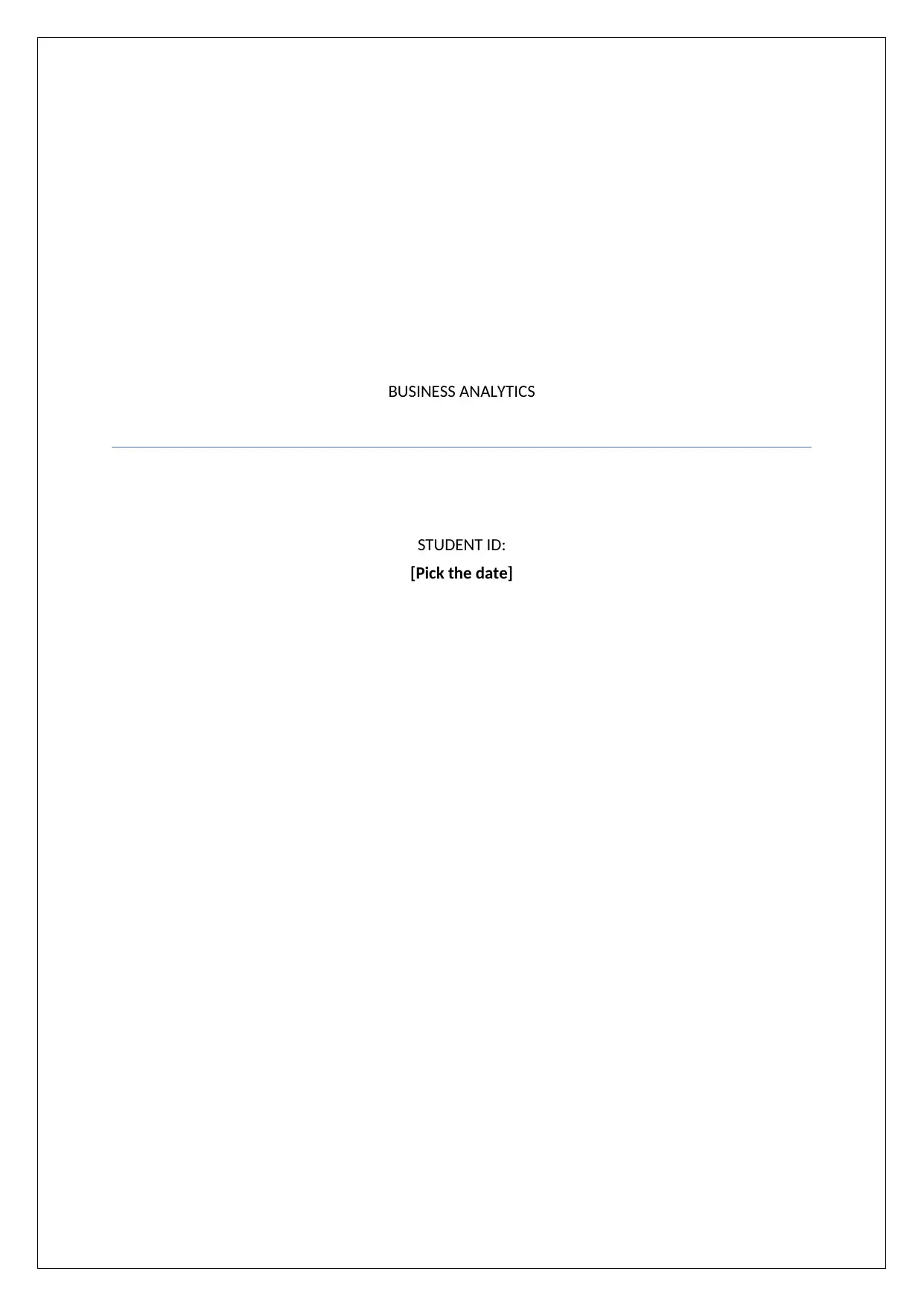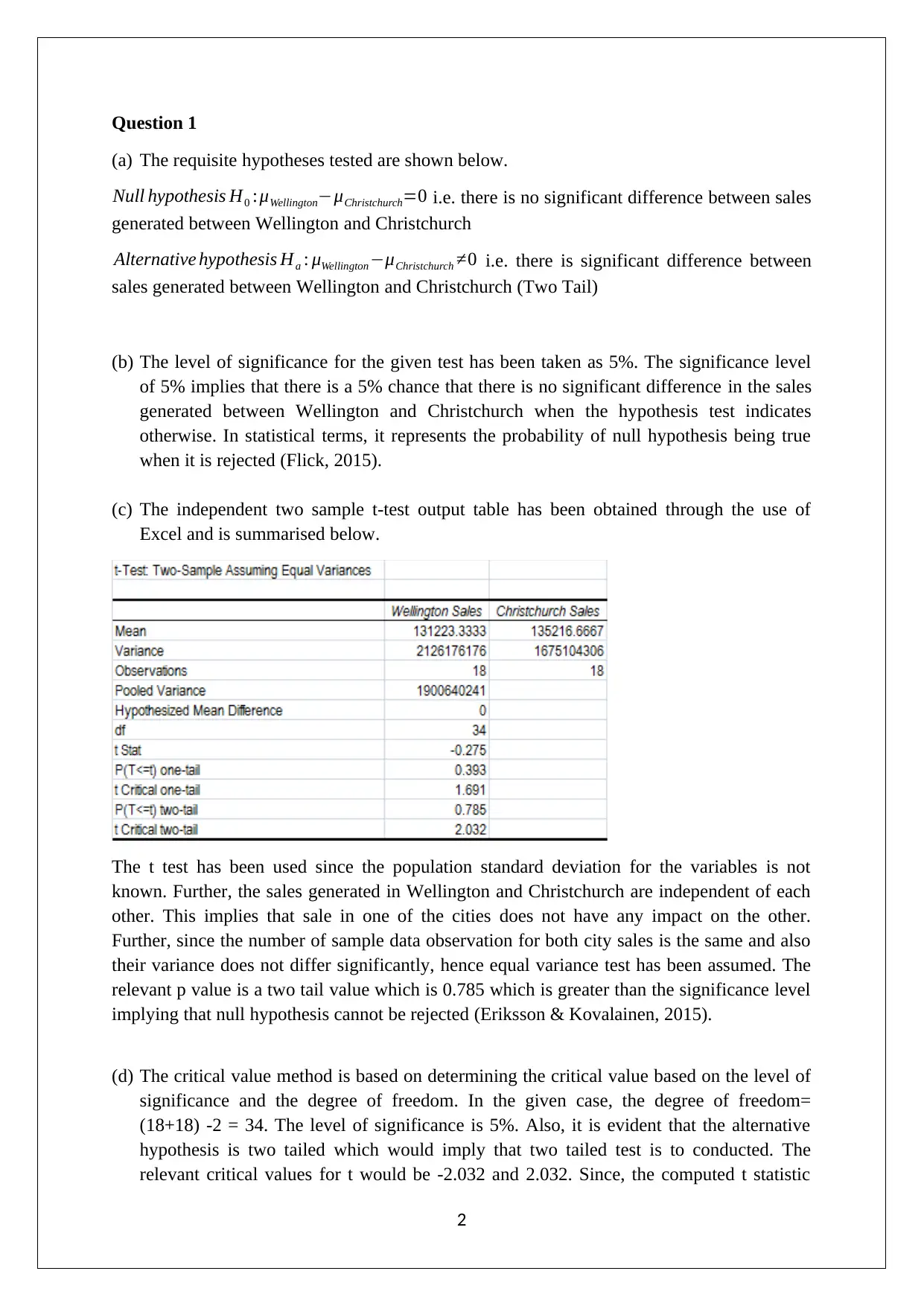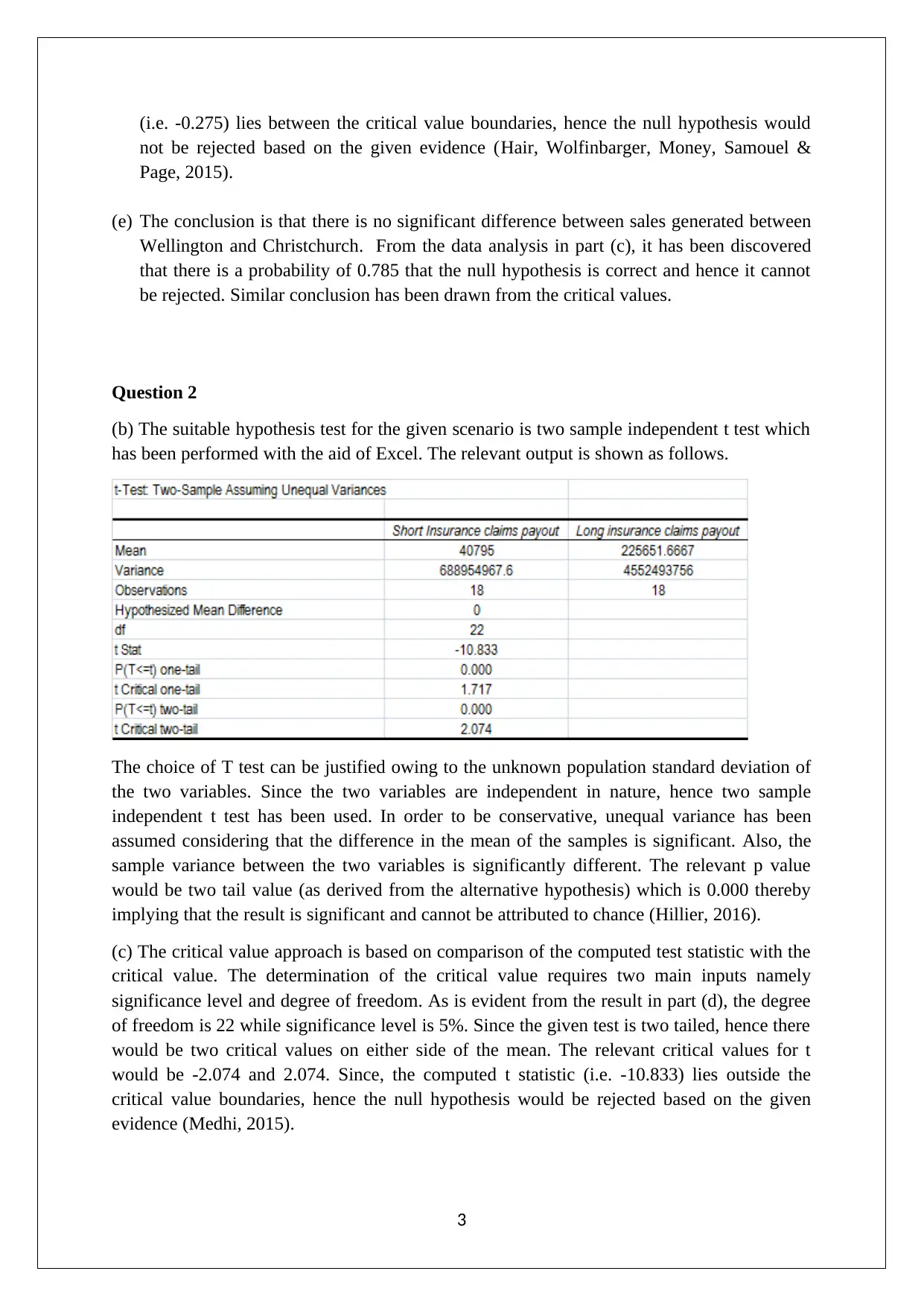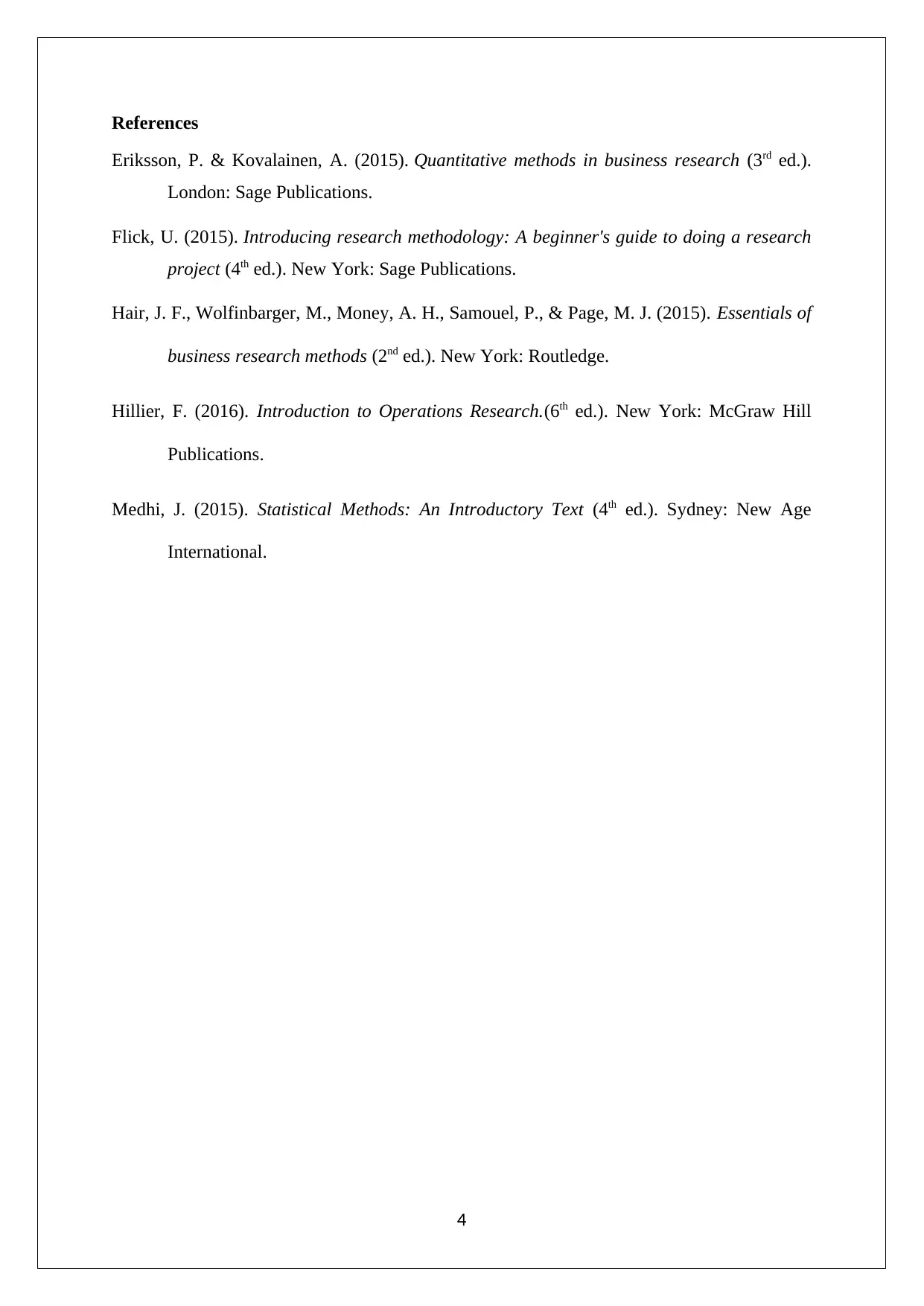BSNS7162 Assignment 1: Statistical Analysis of Business Data
VerifiedAdded on 2022/09/14
|4
|892
|14
Homework Assignment
AI Summary
This assignment solution addresses statistical methods applied to business problems, focusing on hypothesis testing using t-tests. The solution includes two questions. Question 1 examines the difference in sales generated between Wellington and Christchurch using a two-sample independent t-test, analyzing p-values and critical values to determine the significance of the difference. The analysis concludes that there is no significant difference in sales between the two cities. Question 2 utilizes a two-sample independent t-test to analyze another scenario, determining the p-value and critical values. The solution provides detailed explanations of the tests, including the rationale behind the choice of t-tests, the use of Excel for calculations, and the interpretation of results, referencing statistical concepts such as significance levels and degrees of freedom. The assignment demonstrates the application of statistical techniques to make informed business decisions based on data analysis.
1 out of 4










![[object Object]](/_next/static/media/star-bottom.7253800d.svg)